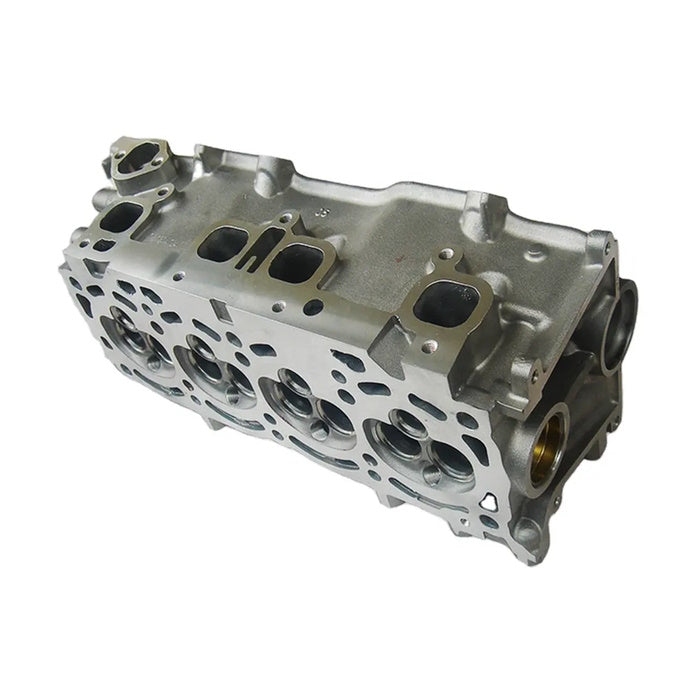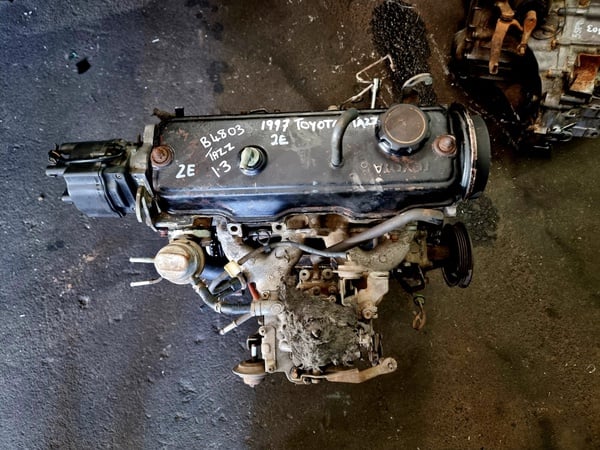Check Out the current Fads in Engine Innovation Via Tazz
In the swiftly evolving landscape of automotive technology, Tazz stands at the forefront, highlighting significant innovations in engine systems that focus on both innovation and sustainability. From crossbreed engines that enhance gas performance to the emergence of hydrogen fuel cells, the trends forming modern-day powertrains are not just enhancing performance yet likewise attending to crucial environmental difficulties.
Hybrid Engine Innovations
Hybrid engine technologies stand for a pivotal shift in vehicle technology, combining the benefits of internal burning engines with electric propulsion systems. This assimilation not only boosts fuel efficiency but also minimizes discharges, meeting significantly rigorous ecological regulations. By making use of both power resources, hybrid engines can optimize performance, delivering power when required while saving fuel during less demanding motoring problems.
Recent advancements in hybrid technology consist of enhancements in battery efficiency and regenerative braking systems. These developments permit better power recovery during deceleration, which can be redirected to aid in velocity or power auxiliary systems. Manufacturers are concentrating on compact designs and lightweight materials to maximize the efficiency of hybrid powertrains.
The development of plug-in crossbreeds has actually also expanded the market, enabling chauffeurs to charge their cars utilizing basic electric outlets. This function usually permits substantial all-electric variety, more decreasing reliance on typical fuels. tazz. As the auto market continues to develop, hybrid engine technologies are anticipated to play a critical function in linking the space between standard vehicles and totally electrical designs, providing a transitional option that deals with varied customer needs and preferences
Breakthroughs in Electric Powertrains
The automobile landscape is rapidly evolving, with electrical powertrains emerging as a leading pressure in lasting transport. Advances in electric car (EV) technology are substantially improving performance, customer, and performance experience. Trick developments include improvements in battery chemistry, which have increased energy density, lowered charging times, and expanded general battery life.
Solid-state batteries, for instance, guarantee to revolutionize the marketplace by providing higher safety and efficiency contrasted to typical lithium-ion cells. Moreover, advancements in regenerative braking systems are making it possible for automobiles to recuperate power throughout deceleration, adding to overall effectiveness.
Along with battery modern technology, electrical motor layouts are becoming much more sophisticated. Advancements such as incorporated electric motors and progressed thermal administration systems are assisting to enhance power delivery and minimize weight, ultimately boosting automobile characteristics.

Jointly, these advancements emphasize the dedication to shift towards cleaner, a lot more efficient transportation solutions, placing electric powertrains at the forefront of auto development.
The Surge of Hydrogen Gas Cells
Progressively, hydrogen gas cells are gaining traction as a feasible alternative to standard interior combustion engines and battery electrical automobiles. This innovation uses the chemical energy saved in hydrogen, converting it into electrical power with an electrochemical response with oxygen. The primary result of this procedure is water, making hydrogen gas cells an ecologically friendly alternative with no exhausts at the tailpipe.

Car manufacturers are significantly buying hydrogen fuel cell technology, identifying its possibility for long-range applications and rapid refueling abilities that measure up to conventional fuels. In addition, sectors such as heavy-duty transport and public transit are specifically appropriate for hydrogen fuel cells, where battery electric solutions may fail as a result of weight and array constraints.
As research study and investment remain to increase, hydrogen fuel cells are poised to play a substantial function Check Out Your URL in the future landscape of clean transport and energy solutions.
Enhancements in Internal Burning Engines
Technologies in internal burning engine (ICE) modern technology are transforming standard cars to meet modern-day environmental criteria and performance expectations. Among the most significant improvements involves the combination of innovative fuel injection systems. These systems maximize the air-fuel mix, enhancing burning effectiveness and leading to minimized discharges. Straight gas shot, as an example, permits much better atomization of gas, causing even more full combustion and enhanced power result.
Additionally, turbocharging has actually acquired prestige, enabling smaller top article engines to deliver higher performance without the weight of larger engines - tazz. This innovation not only improves performance yet also adds to reduce fuel intake. Variable shutoff timing systems are likewise being improved, making it possible for engines to adapt to different driving conditions for boosted torque and responsiveness
In addition, the usage of lightweight products in engine construction is coming to be common, more boosting gas performance by lowering total lorry weight. Engine control systems (ECUs) are increasingly advanced, enabling real-time changes that enhance efficiency and emissions.
These improvements jointly indicate a critical change in ICE technology, lining up with international sustainability objectives while still providing the performance vehicle drivers expect from their lorries. As the industry develops, these enhancements remain to form the future of traditional automobile design.
Future Fads in Engine Effectiveness
Significant improvements in engine effectiveness are anticipated as manufacturers concentrate on incorporating cutting-edge innovations to satisfy strict ecological guidelines and consumer demands. The change in the direction of electrification, hybrid systems, and alternate gas is reshaping the vehicle landscape, driving innovations that boost fuel economic situation and reduce exhausts.
Among the essential patterns is the execution of advanced products and producing techniques. Light-weight compounds and high-strength alloys add to lowered vehicle weight, hence enhancing overall effectiveness. Furthermore, the fostering of turbocharging and variable valve timing technologies permits boosted power outcome from smaller engines, even more improving gas economy.

Conclusion
Technologies in hybrid engine systems, electric powertrains, and hydrogen gas cells demonstrate a dedication to minimizing exhausts while enhancing performance. Enhancements in interior combustion engines and an emphasis on light-weight materials contribute to overall engine effectiveness.
From crossbreed engines that maximize gas efficiency to the emergence of hydrogen gas cells, the trends forming contemporary powertrains are not just boosting efficiency however additionally attending to essential ecological challenges.Crossbreed engine developments stand for an essential change in vehicle innovation, integrating the advantages of interior burning engines with electrical propulsion systems.In addition, turbocharging has obtained importance, enabling smaller engines to deliver greater efficiency without the weight of larger engines. Additionally, the fostering of turbocharging and variable shutoff timing modern technologies permits for enhanced power outcome from smaller sized engines, better boosting fuel economic climate.
Renovations in inner burning engines and an emphasis on lightweight products add to general engine efficiency.